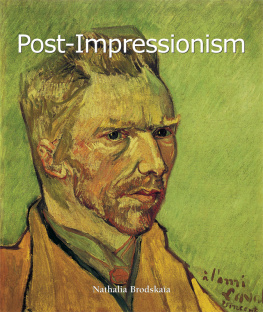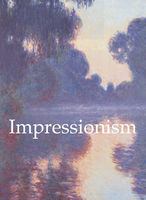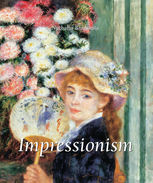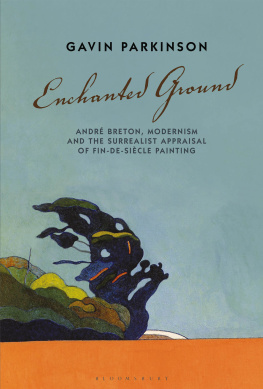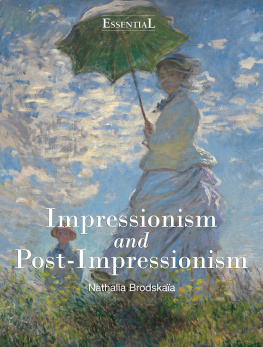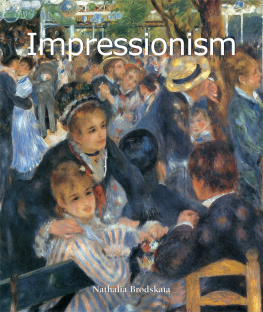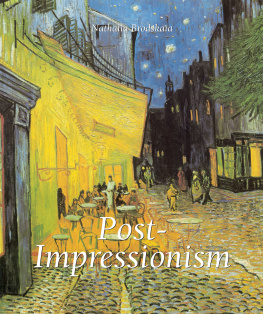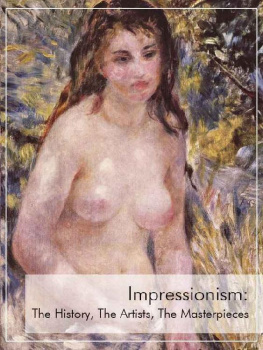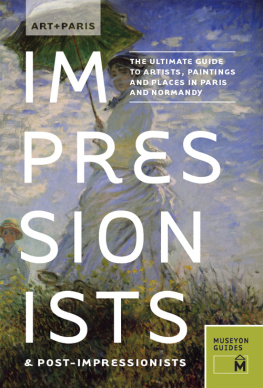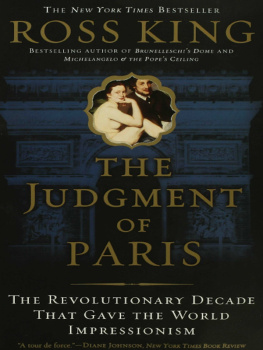Author: Nathalia Brodskaa
Layout:
Baseline Co. Ltd
61A-63A Vo Van Tan Street
4 th Floor
District 3, Ho Chi Minh City
Vietnam
Confidential Concepts, Worldwide, USA
Parkstone Press International, New York, USA
Pierre Bonnard, Artists Rights Society (ARS), New York, USA/ ADAGP, Paris
Maurice Denis, Artists Rights Society (ARS), New York, USA/ ADAGP, Paris
Ker Xavier Roussel, Artists Rights Society (ARS), New York, USA/ ADAGP, Paris
Jan Verkade
douard Vuillard, Artists Rights Society (ARS), New York, USA/ ADAGP, Paris
All rights reserved.
No part of this publication may be reproduced or adapted without the permission of the copyright holder, throughout the world. Unless otherwise specified, copyright on the works reproduced lies with the respective photographers. Despite intensive research, it has not always been possible to establish copyright ownership. Where this is the case, we would appreciate notification.
ISBN: 978-1-78310-389-8
Nathalia Brodskaa
POST-IMPRESSIONISM

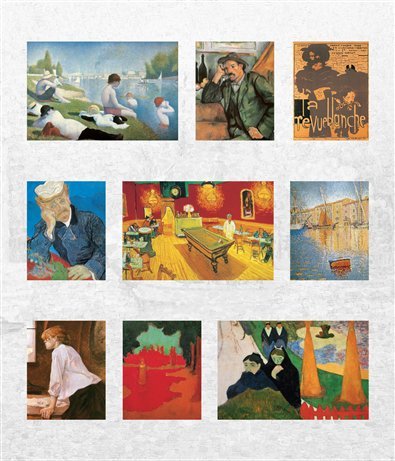
Contents
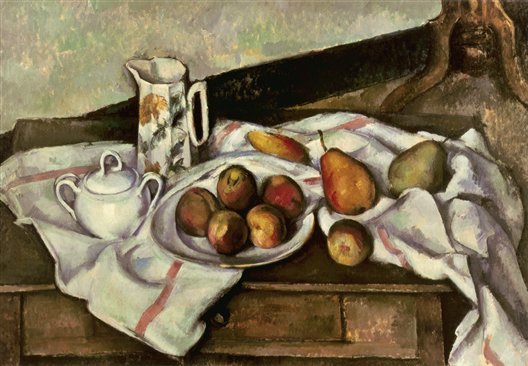
1. Paul Czanne, Peaches and Pears, 1888-1890.
Oil on canvas, 61 x cm .
The Pushkin State Museum of Fine Arts, Moscow.
INTRODUCTION
The term Post-Impressionism has only one meaning: after Impressionism. Post-Impressionism is not an art movement, nor an art style; it is a brief period at the end of the nineteenth century. Impressionism being a phenomenon unique to French painting, the idea of Post-Impressionism is also closely linked to French art. Generally, the beginning of the Post-Impressionist era dates from 1886, from the moment of the eighth and final joint Impressionist Art exhibition. The era ends after 1900, running only into the first decade of the twentieth century. Although Post-Impressionism and its chronological limits are well-defined, it seems that several Post-Impressionist works exist outside this period. Despite this periods extreme brevity, it is often described as an era of Post-Impressionism. In fact, this twenty-year period saw the emergence of such striking artistic phenomena, such varying styles of pictorial art and such remarkable creative personalities, that these years at the turn of the century can without a doubt be characterised as an era.
The Technical and Scientific Revolution
The period of Post-Impressionism began at a time of unbelievable changes in the world. Technology was generating true wonders. The development of science, which formerly had general titles physics, chemistry, biology, medicine took many different, narrower channels. At the same time this encouraged very different areas of science to combine their efforts, giving birth to discoveries that had been unthinkable just two to three decades earlier. They dramatically changed the perception of the world and humanity. For example, the work of Charles Darwin The Descent of Man, and Selection in Relation to Sex was published as early as 1871. Each new discovery or expedition brought something new. Inventions in transport and communications took men into previously inaccessible corners of the Earth. Ambitious new projects were designed to ease the communication between different parts of the world. In 1882 in Greece, the construction of the canal through the Isthmus of Corinth began; in 1891 Russia commenced the construction of the great Trans-Siberian railway which was finished by 1902; in America work started on the construction of the Panama Canal. Knowledge of new territories could not go unnoticed in the development of art.
At the same time there were great developments in telecommunications and transport. In 1876 Bell invented the telephone and, in the last quarter of the nineteenth century people began talking to each other in spite of the distance. Thanks to the invention of the telegraph, in 1895 Marconi developed the network of Hertzien waves, and four years later, the first radio program was broadcast. The speed of travelling across the Earth was increasing incredibly. In 1884 the first steam-car appeared on the streets of France; in 1886 Daimler and Benz were already producing cars in Germany, and the first car exhibition took place in Paris in 1898. In 1892 the first tramway was running in the streets of Paris, and in 1900 the Paris underground railway was opened. Man was taking to the air and exploring the depths of the earth. In 1890 Ader was the first to take off in an airplane; in 1897 he flew with a passenger, and in 1909 Blriot flew across the Channel. As early as 1887 Zd had designed an electrically-fired submarine. It seemed like all the science-fiction projects of Jules Verne had become reality.
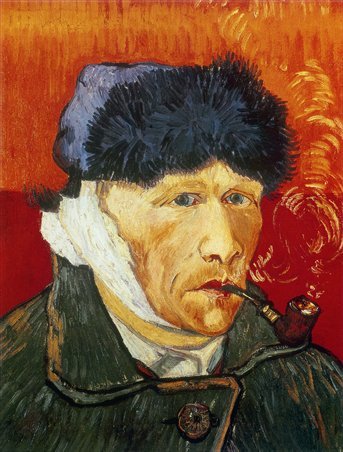
2. Vincent van Gogh, Self-Portrait with
Bandaged Ear and Pipe, 1889.
Oil on canvas, 51 x cm .
Private collection, Chicago.
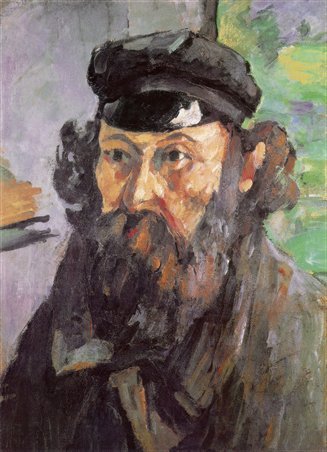
3. Paul Czanne, Self-Portrait with a Cap, 1872.
Oil on canvas, 53 x 39.7 cm .
The State Hermitage Museum, St. Petersburg.

4. Vincent van Gogh, Boats on the Beach of Saintes-Maries, 1888.
Pencil, pen and Indian ink, watercolour on paper, 39 x cm .
The State Hermitage Museum, St. Petersburg.
At the same period, scientific discoveries, barely noticed, but nevertheless significant for humanity, were taking place. In 1875 Flemming discovered chromosomes; in 1879 Pasteur found it was possible to vaccinate against diseases; in 1887 August Weismann published the Theory of Heredity. Lawrence discovered electrons; Rntgen did the same for X-rays and Pierre and Marie Curie discovered radioactivity. These discoveries in the field of science and engineering might seem distant from the Fine Arts, but nevertheless, they had a major influence on them. Technology gave birth to a new kind of art: in 1894 Edison recorded the first moving pictures, and in 1895 the Lumire brothers screened their first film.
European explorers became more and more adventurous, and brought back to Europe new and remarkable materials. In 1874 Stanley crossed Africa. In 1891 Dubois discovered the remains of a pithecanthropus erectus on the island of Java. Previously during the 1860s, archaeologists E. Lartet and H. Christy found a drawing of a woolly mammoth engraved on a tusk in the Madeleine caves. It was hard to believe in the existence of Palaeolithic art, but further archaeological research provided evidence of its aesthetic value. In 1902 archaeologist mile Cartailhac published a book in Paris called Confession of a Sceptic which put an end to the long-lasting scorn of cave art. The amazing Altamira cave paintings, which had been subject to doubt for a long time, were finally proclaimed authentic. An intensive search for examples of prehistoric art began, which at the turn of the century turned into cave fever.

